Forum Trajanum — Forum the Emperor!
2018 was a year in which there was not one, but two Stefan Feld games themed around ancient Rome. The first, Carpe Diem, is a relatively straightforward tile drafting and placement game where players act as wealthy Patricians. The second, Forum Trajanum, is a much bigger, heavier and more elaborate affair that has attracted enough attention to be picked up by Stronghold Games for distribution in the United States. Stefan Feld is the elder statesmen of modern board gaming, so let’s find out if Forum Trajanum lives up to expectations.
Essentially a tile placement game with some very light drafting, Forum Trajanum features a simple turn structure that is very hard to get wrong, but it demands an awful lot of strategic planning and foresight from players. It’s a very tight, very classical design that I would suggest is more or less themeless and very unlikely to appeal to inexperienced players. The more I played, the more I felt that the target audience for Forum Trajanum was almost certainly those players who enjoy optimising each and every choice as they work on a large individual puzzle with no real interaction between the players.
Before I jump to conclusions though, let me tell you a bit more about the game. Firstly, a large (and fairly attractive) central board will be placed on the table with several other tiles on it. At the full count of four players, there will be five of these tiles on the central board, with one and two tiles fewer at three and then two players respectively. Around the edge of the main board there are four tracks, three of which will track building progress against various objectives, whilst the other is a more traditional overall score tracker.
In addition to this central board, the players each receive a board of their own, each of which depicts their own construction area. On their personal board, each player will lay out a six by six grid of envoy tokens, which will be randomised and placed face down. In each corner, a construction crane of a different colour will be placed, with the envoy tokens on the crane flipped face up. I should also mention that three of the envoy tokens are female (which can be hard to spot) and come with their own rules during setup.
One of these female envoys will be picked randomly and placed face up onto the relevant ability space down the left hand side of the board, whilst the other two will be placed in either pair of diagonally opposite corners, instead of regular male envoys. A final envoy will be placed on the boat space down at the bottom right of the player board. The only other pieces to prepare for each player are their slide bar (which is a slightly weird scoring mechanism that you kind of need to use to understand) and then a load of personal resources such as builder and envoy meeples, as well as cash.
Whilst a fair bit of time and space will already have been consumed in setting up Forum Trajanum, there is more to come. Firstly, several decks of cards need to be prepared and placed alongside the board. Each of three decks of eight cards will be placed face down on the left hand side column of the main board, and then a deck of objective cards will be shuffled and three cards will be placed face up. Each of these sets of three cards corresponds to one of the game rounds, with the decks of eight cards being used to drive the action (which I’ll describe later).
Finally, Forum Trajanum demands the preparation of a range of shared supply token and meeple piles. The board itself will be home to sixteen stacks of single and double space building tiles, arranged by colour, size and (for single tile grey buildings) by symbol. Next to the board, the players will place builder, tribune, assistant and worker meeples, sorted by colour in the case of the workers. These meeples are about twice the size of those in most games and there are lots of them, so again, Forum Trajanum is impressive to look at but demanding of table space.
With all this done, the game can begin. The lead player (holding another elaborately carved wooden meeple) will draw two cards from the current deck to reveal two symbols. These symbols correlate to two rows or columns on each player board (it can be two rows, two columns or one of each.) The player boards have two sides, one of which is identical across all four boards (as pictured) whilst the other side is randomised somewhat, but it makes no real difference to gameplay.
By following these symbols, players will look down the indicated column or along the indicated row in order to choose an envoy token from each of the symbols indicated by the cards. They will then look at the back of these envoy tokens and assess what is on offer. Envoys can show a number of different benefits including drawing workers, builders, tribunes and assistants, taking cash, flipping the personal slide bar that I mentioned earlier, or adding a citizen. Citizens work in the same way as the female envoys, so when taken, a player can add them to their citizen track — adding new abilities and potentially enhancing scoring. The downside to citizens is that each one will need to be paid during scoring, so a balance must be struck.
With two envoys chosen, each player will then pass one of their tokens to the neighbour on their right. The players will then simultaneously choose which of the two envoys they wish to take the benefit of. Assuming that it is their own envoy (and not a citizen,) then it will be placed on the boat space in the bottom right hand corner of their own board and the benefits are taken from the supply. If it’s the envoy that an opponent passed to you, then unless its a Citizen (which would be an unusual pass) then it’s simply placed off to the side (but the benefit is still taken.)
After this mini draft has taken place, the second phase of the turn begins, allowing players to build. Simply put, a player will trade one or more of their workers or builders to construct either a grey building or one of the four different coloured buildings as denoted by their workers. If a player wishes to build a grey building, then she will simply place a builder back into the supply, then draw the building tile of her choice and place it into an empty space on her own forum. This will allow her to increase her standing on the matching track on the main board also usually allowing her to take a benefit as depicted.
If a player decides to spend workers instead, then she can choose a building of the colour that matches the worker(s) spent and instead, place that on her forum. If she does use workers, then instead of adding to her standing on one of the tracks, the player will instead take envoys from her boat space and place them face up on the tiles that were placed on the main board during setup, covering a matching number of coloured spaces. If a player can cover an entire area in this way, then she will be able to score it later.
Play then continues in this way for four turns each round, with the cards drawn dictating how the draft is organised and which envoy tokens are drawn. After each deck is depleted, a scoring phase takes place, with area control of the main board (adjusted by the personal slider), buildings on the personal forums and Trajan objective cards all scored, as well as a couple of other things. This gives Forum Trajanum a distinctly point salad feel to it that experienced gamers seem to relish, but which I noticed newcomers struggled to get to grips with. Simply put, whilst the gameplay itself is straightforward, it can be quite complex to plot the right route to victory.
Each game of Forum Trajanum lasts about one to two hours depending on the number of players, although it is likely that players will need a few games to get used to it and reach an optimal play style. Money is very tight, so some of the more powerful strategies (using citizens for example) are well controlled and assuming that all players are equal, it’s very unusual for anyone to form a runaway lead unless they really have perfected an optimal strategy.
Even though it might seem that the randomness of the envoy tiles can have a large bearing on the outcome, the power level of each one feels balanced and after the first two or three turns, you’ll almost always want to take the benefit of both envoys — which you can do by spending two Tribune meeples. Whilst we’re talking about having control over proceedings, It’s also possible to use the Tribune to ignore a street card, which is important because some scoring events incentivise players to position buildings adjacent to each other (or to build double size buildings that span adjacent spaces). It’s also possible to spend Assistant meeples to change the colour of workers, for similar reasons.
Describing scoring would be a considerable undertaking in itself, but as you can probably imagine from the way that I described it as a point salad earlier, Forum Trajanum offers many routes to victory, most of which require some adaptation as the game goes on. It may be possible to focus on placing envoys on the main board, but it’s also valuable to construct buildings of certain colours whenever a construction crane is revealed. Trajan cards offer valuable points, whilst there are buildings that will provide some points during normal gameplay (outside scoring rounds.) Citizens, when paid, will also enable a large number of points to be score. As I said, it can be mind boggling.
Ultimately, I find Forum Trajanum to be a very satisfying but somewhat scholarly experience every time I play it. My first few games felt unstructured and a little bit confusing, but the more I’ve played it, the more I’ve been able to immerse myself into what really is a very complex, multi-layered puzzle. Whilst it probably does matter for some players, the drafting element doesn’t feel massively interactive to me. Some tiles are good for you and bad for your opponent, whilst others are the opposite — these things do matter, but more often than not you’ll simply want to take the token that suits your own goal right there and then. There’s little more to it than that in my humble opinion and, aside from snagging spaces from the other players, there’s no other interaction.
If you play in a group that is seeking a deep and challenging tile placement game that is almost always tight, but which really rewards smart, meticulous play (and offers no support for thoughtless play) then Forum Trajanum might be an option. It’s a very beautiful game when laid out and no expense has been spared in terms of component quality. That said, the theme doesn’t feel especially prominent and there’s little of Ancient Rome peaking through the thinnest veneer imaginable. In short, an excellent design that is rewarding yet a little unwelcoming.
A copy of Forum Trajanum was provided for review purposes and can be purchased from all good local games stores. For online purchases, please visit 365 Games. More information can be found on the website of publisher Stronghold Games.
Love board games? Check out our list of the top board games we’ve reviewed.

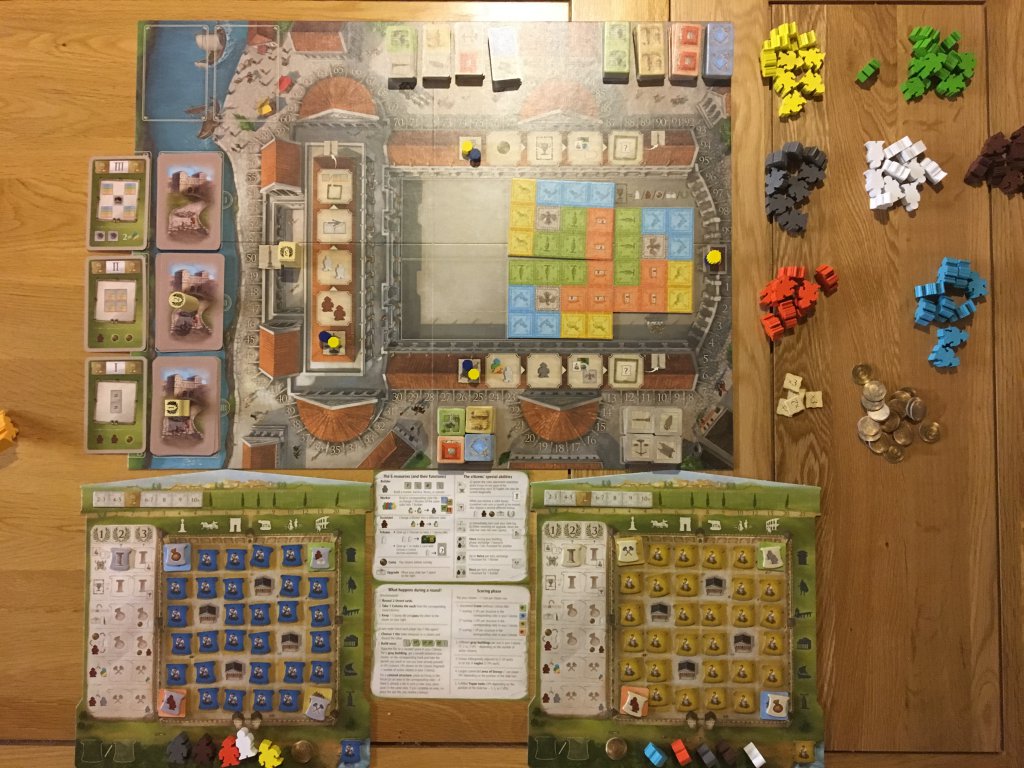
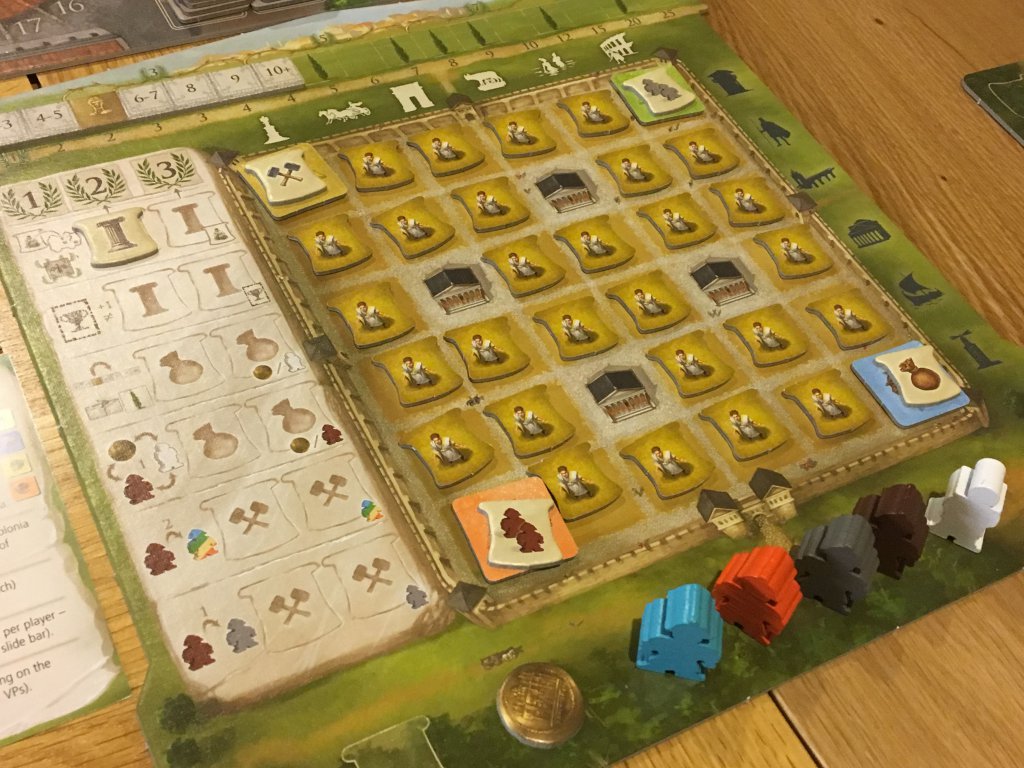
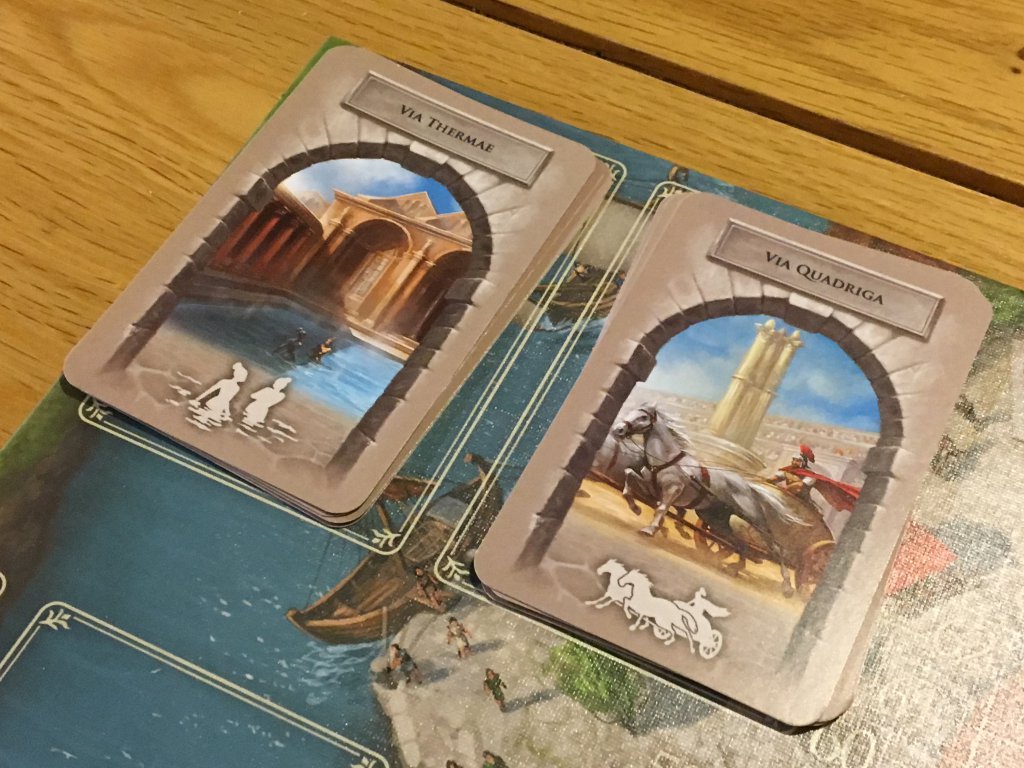
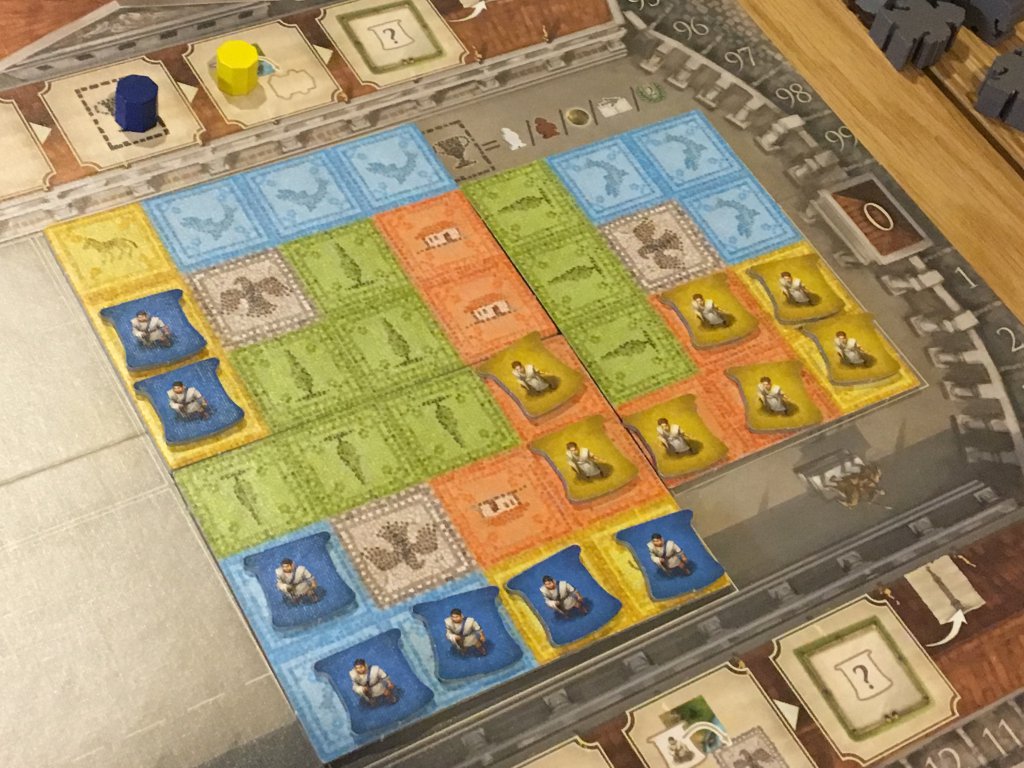
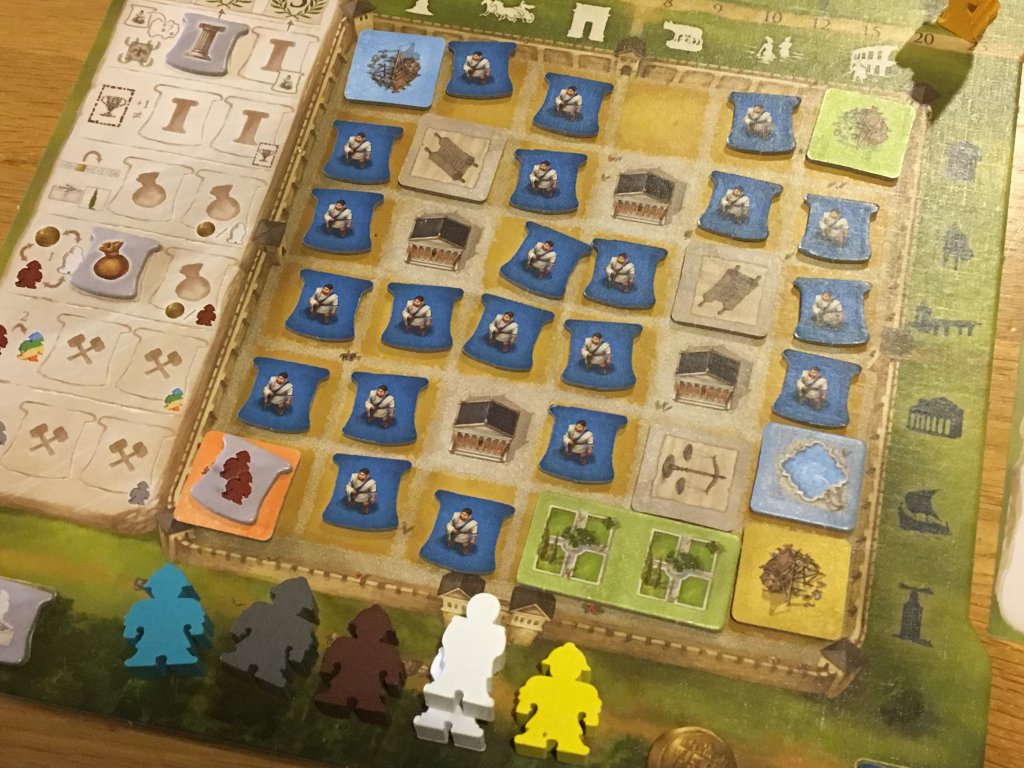
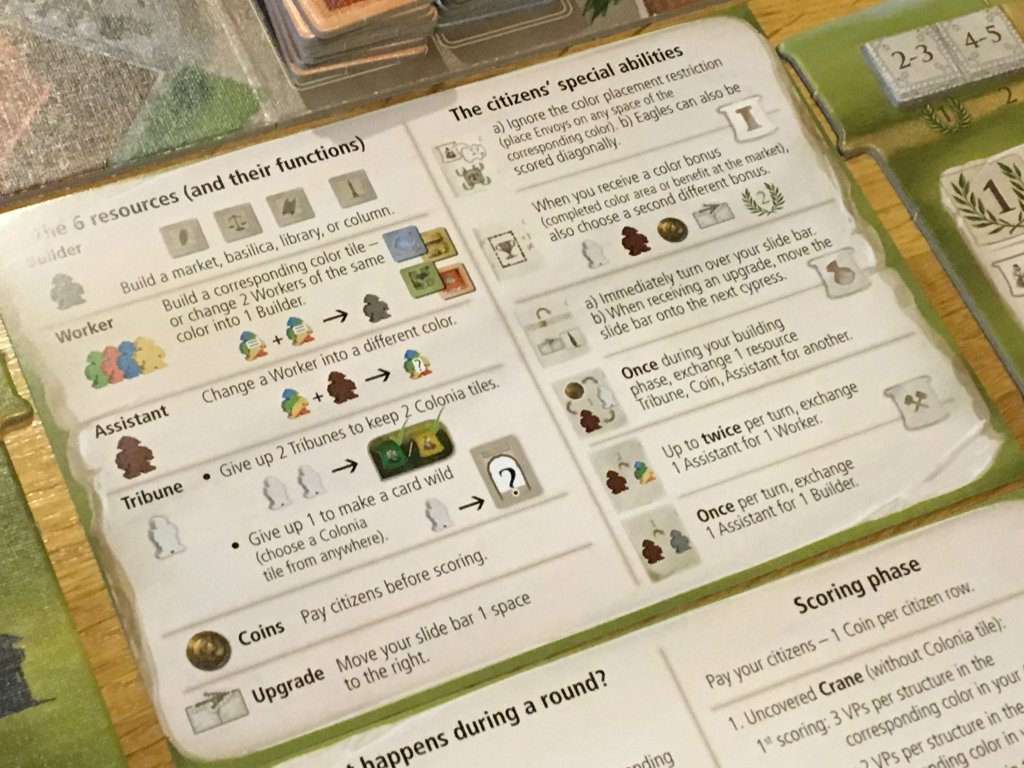
Comments are closed.